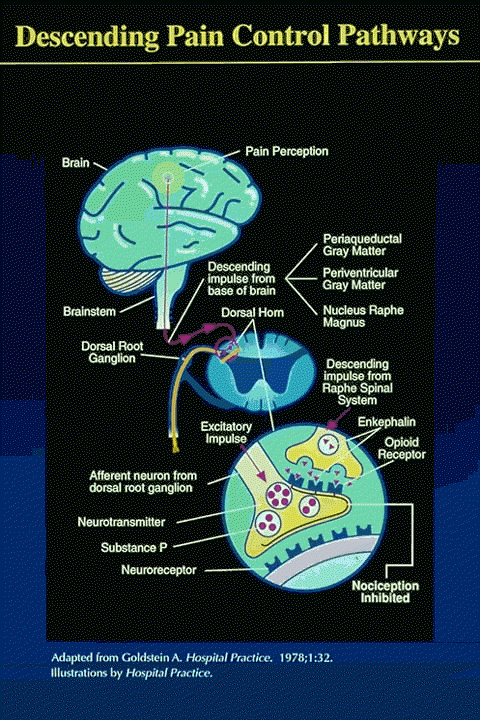-
The periaqueductal gray matter
(PAG), periventral gray matter (PVG), and the
nucleus raphe magnus (part of the rostroventral
medulla) have high concentrations of opioid
receptors, which are known to play an active role
in the endogenous descending nociceptive control
system.
-
These pathways are serotonergic
and selectively inhibit the STT, SRT, and SMT
ascending pain tracts.
-
Electrical stimulation of the PVG
increases the response threshold to noxious
stimuli.
-
Several of the endogenous
substances that are part of this control system
and exhibit analgesic properties have been
identified and include:
-
(beta)-endorphins (from
the pituitary and basal hypothalamus)
-
enkephalin, and dynorphin.
The latter two pain modulators appear to
coexist in some areas of the dorsal horn
where there is an abundance of opioid
receptors in central terminals of primary
afferents.
courtesy of Roxane Pain Institute used
with permission
|
